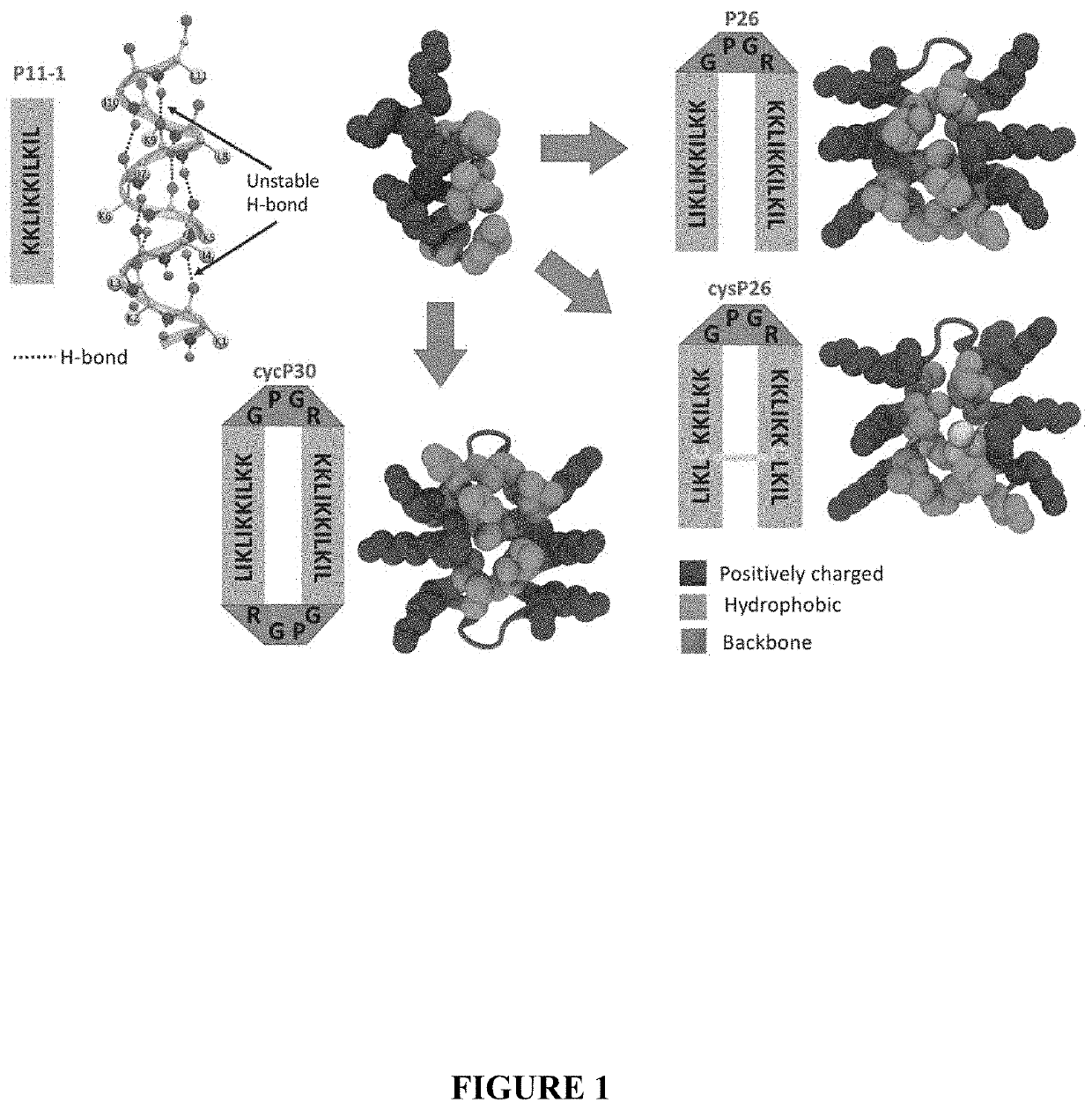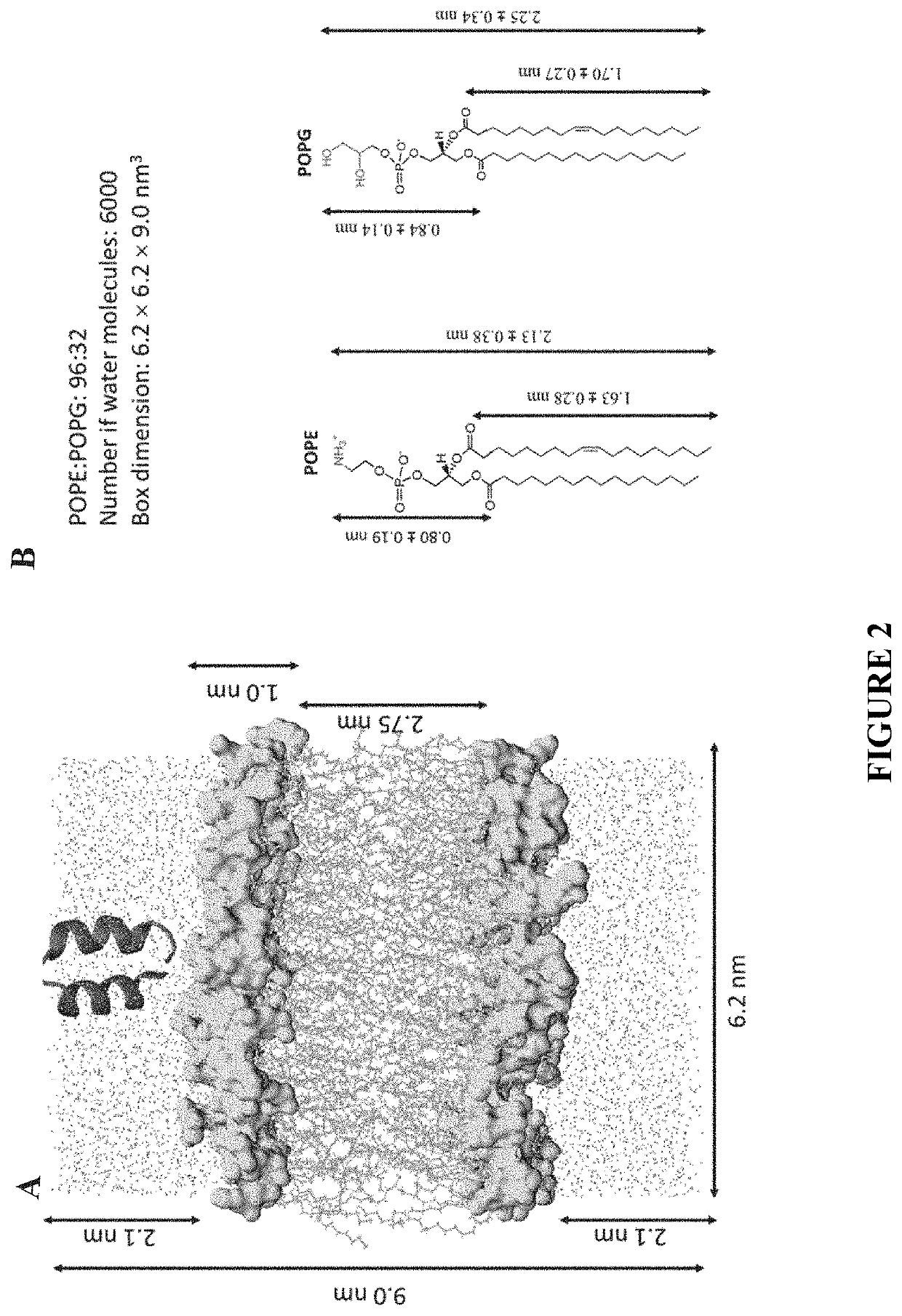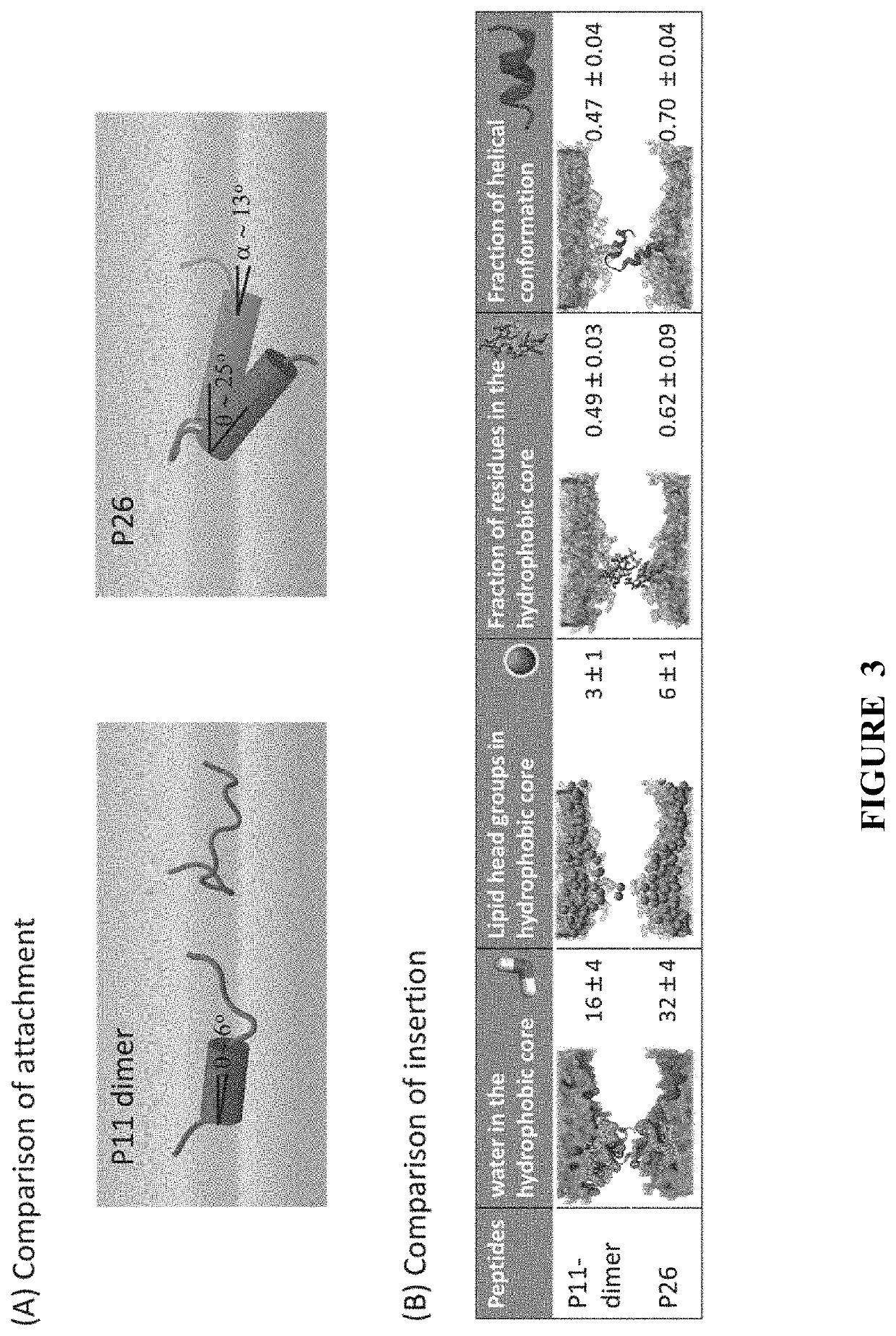Compositions and Methods for the Treatment of Huanglongbing (HLB) aka Citrus Greening in Citrus Plants
a technology of citrus greening and citrus, applied in the field of citrus greening citrus greening, can solve the problems of ineffective control, bitter fruit, inability to market, etc., and achieve the effects of reducing susceptibility to bacterial resistance, increasing bactericidal effect, and increasing efficiency of attachment and/or insertion
- Summary
- Abstract
- Description
- Claims
- Application Information
AI Technical Summary
Benefits of technology
Problems solved by technology
Method used
Image
Examples
example 1
Evolution and Characterization of Bacterial Resistance Against a Host Amphipathic Helix
[0276]As noted above, the biggest drawback of the host amphipathic helical peptides is the evolution of bacterial resistance, i.e., ability of the bacteria to block attachment, insertion, and rupture of the bacterial membrane by the peptides. The most direct way to determine how the resistant strain blocks the activity of a given host amphipathic helical peptide is to first generate a resistant strain against the peptide, then sequence the genome of the resistant strain and finally, identify the mutated genes that adversely affect attachment, insertion, and rupture of the bacterial membrane by the peptide. However, these experiments cannot be done with Liberibacter since it is not culturable. Therefore, the present inventors selected two human E. coli strains to develop resistance against an endogenous amphipathic helical peptide and to identify the mutated genes that confer resistance by blocking...
example 2
Design of Next-Generation Host-Derived Amphipathic Helical Antimicrobial Peptides
[0279]In one preferred embodiment, the present inventors demonstrate that the design of novel amphipathic helix based upon host analogs may lead to anti-CLas therapeutics that are more active and less toxic than the host analogs and not expected to be susceptible to bacterial resistance. As noted above, the host single amphipathic helix causes structural instability resulting in decreased activity as well as susceptibility to bacterial / host proteases. The present inventors sought to generate a novel AMP by coupling two amphipathic helices, in this case P11 through a linker domain to generate a helix-turn-helix AMP. Specifically, as shown in FIG. 1, the present inventors joined two host helices by a GPGR-turn or linker. In this configuration, the GPGR-turn or linker may block end-fraying at the N-terminus of one helix and C-terminus of the other helix. This configuration leads to a helix-turn-helix scaff...
example 3
Effect of Different Peptides on the Viability of N. benthamiana Mmesophyll Protoplasts
[0283]As shown in FIG. 9, young leaves were taken and incubated for 5 h in dark with cellulase and macerozyme in buffer containing mannitol, calcium chloride and MES. Protoplasts were released by passing through cheese cloth. Protoplasts were incubated with different peptide concentrations and photographs were taken after 1 h. Cells with spherical shape are defined as viable. Hints to cell death include loss of spherical shape, release of chloroplast and protoplast aggregation. The arrows here indicate cells that have been damaged due to the toxic effect of the peptides. P11 is the single helix from which P26 and cysP26 are engineered.
PUM
| Property | Measurement | Unit |
|---|---|---|
| Fraction | aaaaa | aaaaa |
| Molar density | aaaaa | aaaaa |
| Molar density | aaaaa | aaaaa |
Abstract
Description
Claims
Application Information
 Login to View More
Login to View More - R&D
- Intellectual Property
- Life Sciences
- Materials
- Tech Scout
- Unparalleled Data Quality
- Higher Quality Content
- 60% Fewer Hallucinations
Browse by: Latest US Patents, China's latest patents, Technical Efficacy Thesaurus, Application Domain, Technology Topic, Popular Technical Reports.
© 2025 PatSnap. All rights reserved.Legal|Privacy policy|Modern Slavery Act Transparency Statement|Sitemap|About US| Contact US: help@patsnap.com



